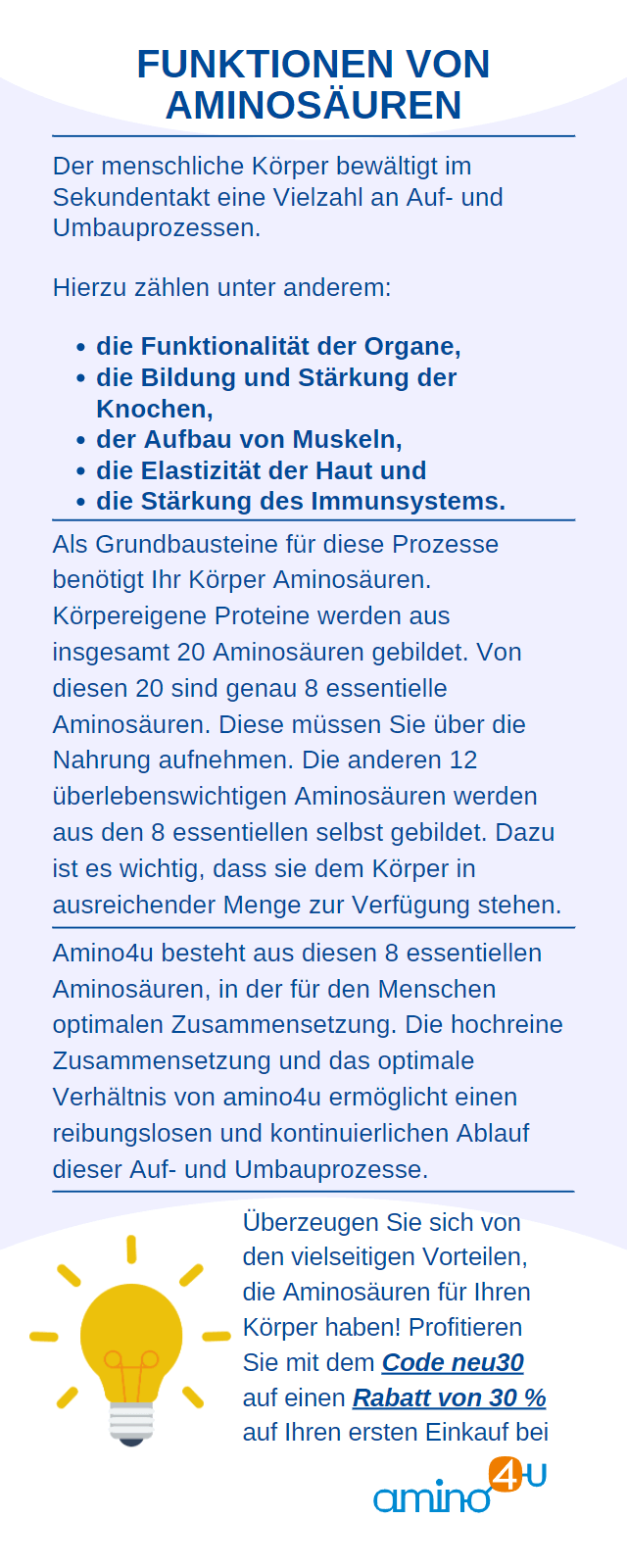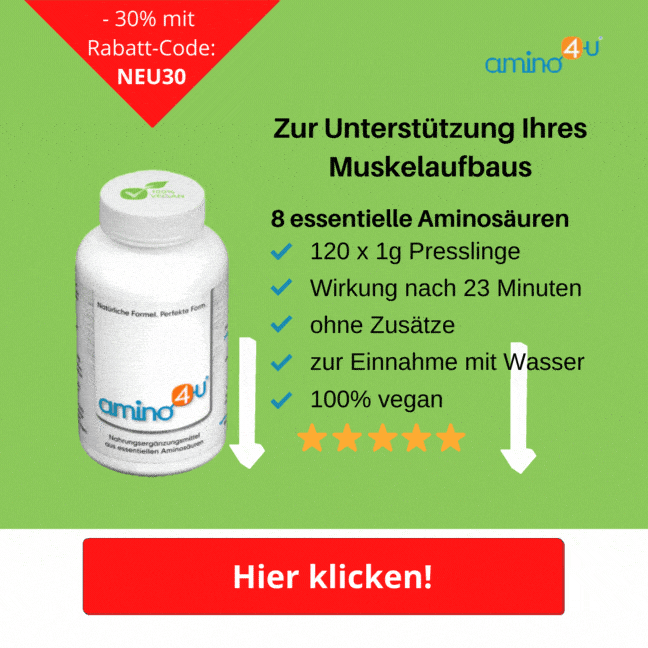Muscle growth is sought after. Many men - and women - are increasingly realizing that more muscle can mean better appearance, performance and health.
Since muscles also protect joints and vertebrae and are literally fat-burning engines in the human body, we want more of them today rather than tomorrow. If you're in a hurry to build muscle , you shouldn't be too impatient.
There are no shortcuts or side paths that lead to more muscles . Behind the growth are complex metabolic processes and one or two training stimuli.
Promoting and increasing muscle growth is possible. In this article we examine whether and how muscle building can be accelerated.

Principles of muscle growth
Did you know that every human being has around 650 muscles? When we walk, smile, or blink our eyes, our muscles are involved. Every time you move, a muscle contracts.
It is therefore not surprising that the muscles consume a large part of the energy. Even when you rest and breathe lightly, your muscles burn calories. This is, among other things, what makes building muscle so attractive to us.
Like a combustion engine, muscles can consume energy and burn fat even when at rest. This means that muscles are involved in many metabolic processes.
Every bodybuilder and strength athlete knows that fat and muscle have an opposite relationship . That's why strength athletes follow strict, phase-shifted nutrition and training routines.
During a strict diet phase, the body breaks down fat in order to be able to lose weight and build muscle particularly intensively in the following phase.
Muscle growth: How do muscles grow?
If you want to deal with the growth of muscles , take a look at the anatomy of the muscles. It becomes clear that muscle growth is theoretically possible in two different ways.
A distinction must be made between the formation of new muscle fibers (hyperplasia) and the thickening of existing muscle fibers ( hypertrophy ). The formation of new muscle fibers as a result of certain demanding stimuli has not yet been proven in humans.
It could be recognized in mice . The transferability of the results to humans and other mammals remains controversial.
When we talk about muscle growth , we mean the thickening of already existing muscle fibers .
Our muscles are divided into skeletal muscles (striated muscles), organ muscles (smooth muscles) and cardiac muscles. Internally, a muscle is made up of specific structural elements arranged in a hierarchy.
The smallest unit is the myofibril . Several microfibrils form a muscle fiber. The fibers come together to form fiber bundles. A muscle consists of a combination of different muscle fiber bundles.
The muscle is surrounded by a sac of connective tissue called the fascia . The tendons ensure that the muscle attaches to the bone.
Myofibrils are made up of two protein building blocks, atkin and myosin. The striated muscles are particularly connected to the brain. Every movement begins with a nerve stimulus that comes from the brain.
The release of certain messenger substances begins a sequence of reactions that lead to the contraction of a muscle. During contraction, Atkin and myosin slide into each other. The question of where the working muscles get their energy from is also interesting.
The focus is on an energy component of the cell, adensoin triphosphate (ATP) . ATP is formed primarily from fatty acids and glucose.
Oxygen is consumed, which characterizes aerobic energy metabolism. Under maximum stress, ATP production switches to anaerobic energy metabolism. The substance is then formed without oxygen.

The importance of resistance for muscle growth
As already mentioned, muscle growth is generally understood to mean an increase in the thickness of the muscle fiber. The muscle cross-section increases. There is no increase in the number of muscle cells .
The prerequisite for muscle hypertrophy is that a growth stimulus acts on the muscle . This leads to an increased storage of proteins in the muscle.
The supra-threshold stimulus consists of an appropriate level of voltage and an appropriate duration of voltage. The level of tension is set to at least 50% of the maximum strength and the duration of tension to around 90-120 seconds towards muscle exhaustion.
To promote muscle growth , overload the muscle with appropriate resistance for a period of time. According to experts , only a stimulus that addresses as many muscle fibers as possible can increase muscle growth .
Since intense resistance also causes small damage to the muscle, it needs a rest period for further growth . The combination of resistance and rest ensures the desired muscle growth .
Training recommendations for muscle growth
If your goal is to build muscle quickly , you should set an adequate stress stimulus, train correctly and don't neglect recovery breaks.
- Strength counts
More strength can increase muscle growth. Athletes often strive to increase their strength levels so that their muscles can grow optimally. More strength can also lead to more muscle overall by building mass . Strength is based on your own body weight. In movement patterns, such as a squat , you aim for a load that is measured using your own body weight. For squats, for example, you could assume a value of 1.5 times your body weight. - What does “training properly ” mean?
When we talk about “ correct ” training, the main thing is to replace endurance training with intensive strength training . The main way to achieve the level of tension (usually not) is through endurance training. - Don't forget to stretch
Stiff, sticky muscles and fascia stand in the way of rapid muscle growth . That's why the training stimuli and recovery breaks also include stretching units.

Nutrition and additional protein intake
Muscles consist predominantly of protein. If muscle fibers are to thicken, there must be enough building material available. The building material is proteins, or the smallest building blocks of proteins : the amino acids .
Anyone who stimulates muscle growth should therefore also ensure that they consume sufficient protein.
While the recommended requirement for protein for people who are less physically active is around 0.8 mg/kilogram of body weight per day, the requirement for people who train intensively can be significantly higher.
Values of up to 1.7 mg per kilogram of body weight and day are often mentioned here. When it comes to protein supply, many questions are very controversial.
The opinion is often expressed that we consume enough or perhaps even too much protein with an average diet. Even popular scientific media warn against consuming too much protein.
Is it possible to accelerate muscle building without additional protein intake ? This question cannot be answered with a standard “ yes ” or “ no ” for everyone.

There is no muscle gain without enough protein
Muscle growth requires protein as a building material. The need for protein increases when you train intensively. It is questionable whether this increased need can be met with normal nutrition.
The protein consumed with food differs in its value. The question of value is about how easily usable certain protein sources are for the human body.
If one claims that animal foods are preferable to plant-based foods when it comes to the value of protein, that is only partially true.
Animal foods contain all 8 essential amino acids more often than plant foods. However, when it comes to the value of proteins and their usability in the human organism, it is often the combinations of animal and plant proteins that achieve good availability.
For example, soy protein also has a particularly high value. Therefore, vegan muscle building can also work.
If you want to achieve an increased need for proteins through different foods, you should have in-depth knowledge of how to combine the appropriate foods. It can be easier and more reliable to increase muscle building with appropriate protein products .
Special amino acid groups and other building-promoting substances
Strength athletes and bodybuilders don't rely on protein alone if they want to increase muscle growth . Certain combinations of amino acids , such as the well-known BCAA products , are often recommended.
The abbreviation BCAA stands for the amino acid trio valine, leucine and isoleucine. Due to their chemical structure, these 3 amino acids are also referred to as branched-chain building blocks .
The studies on the potential effectiveness of BCAA for an increased muscle building effect are not clear. A current overview study from 2019 does not rule out an increase in muscle growth through BCAA .
Under certain circumstances, muscle building effects can also occur indirectly. This could be the case, for example, when supplying the amino acid arginine . Studies indicate that arginine increases performance.
Strength athletes speak of more “ pump ” due to the vasodilating effect of this amino acid . This can allow for more intense training and therefore more muscle growth in a shorter period of time.
It has not yet been scientifically proven whether other amino acids or substances similar to them such as citrulline, creatine or carnitine can accelerate muscle building .

Conclusion: The muscle can be trained, but not driven
Before your muscles grow, intensive training is recommended. This requirement for building muscles cannot be avoided.
You should also provide the organism, and thus the muscles, with enough protein . Here, additional intake of protein products can be a way to reliably meet the increased needs resulting from intensive training.
Whether muscle growth can be further accelerated by using other specially combined protein and nutritional supplement products is a question of personal experience. Every body can react individually here.
Above all, beginners often find that their muscles grow faster through regular training and the appropriate protein intake than those of strength athletes who have already trained heavily.
The higher the training level, the more difficult muscle growth can become. This could be an incentive for you to work on building muscle so you can see results quickly .




